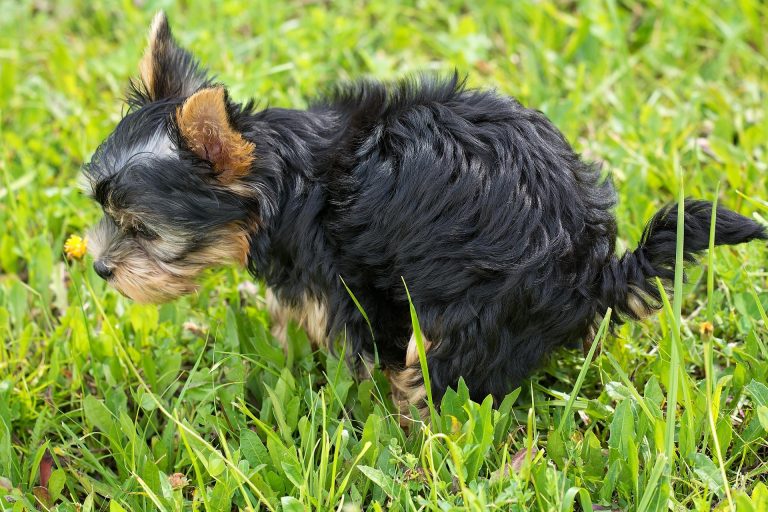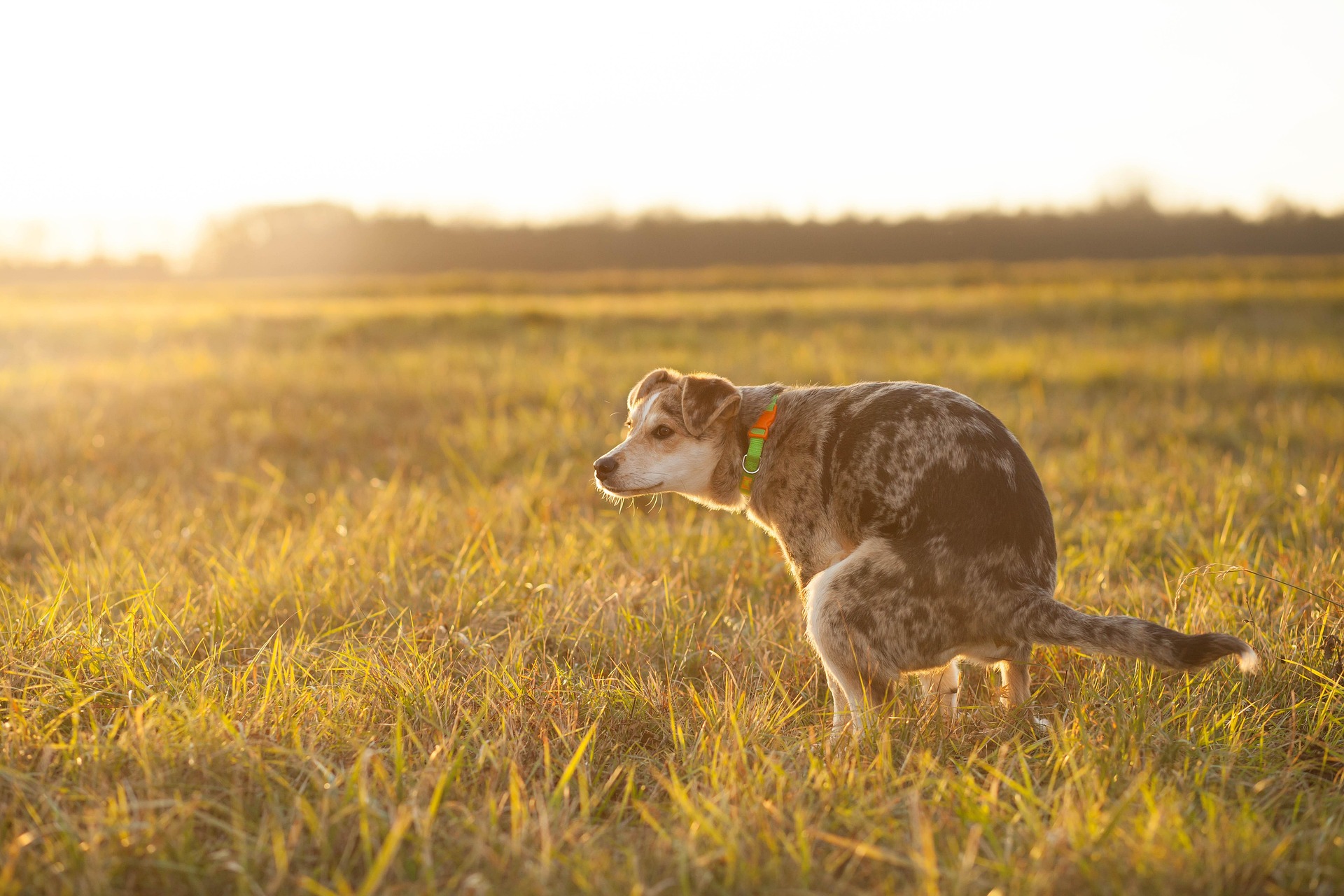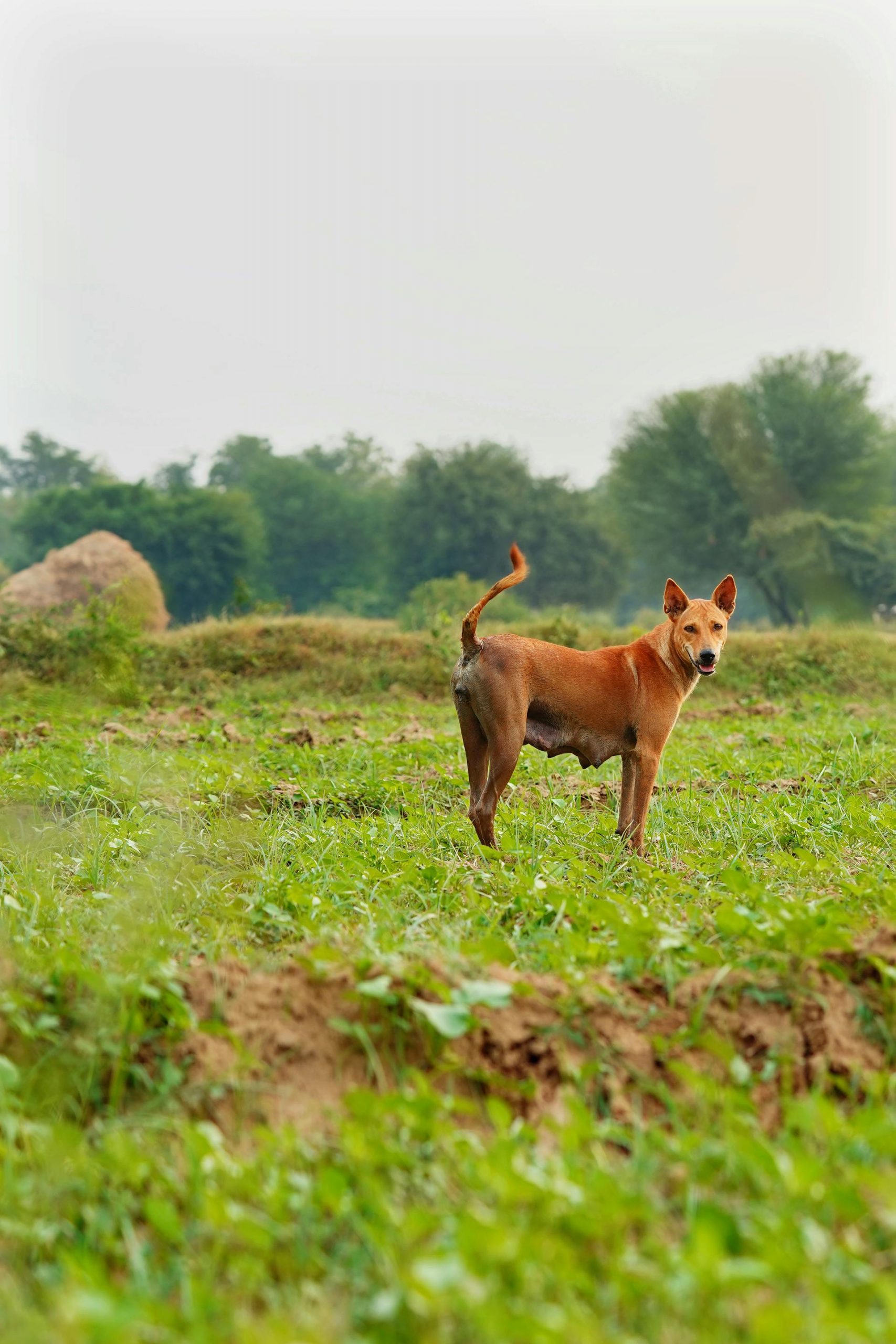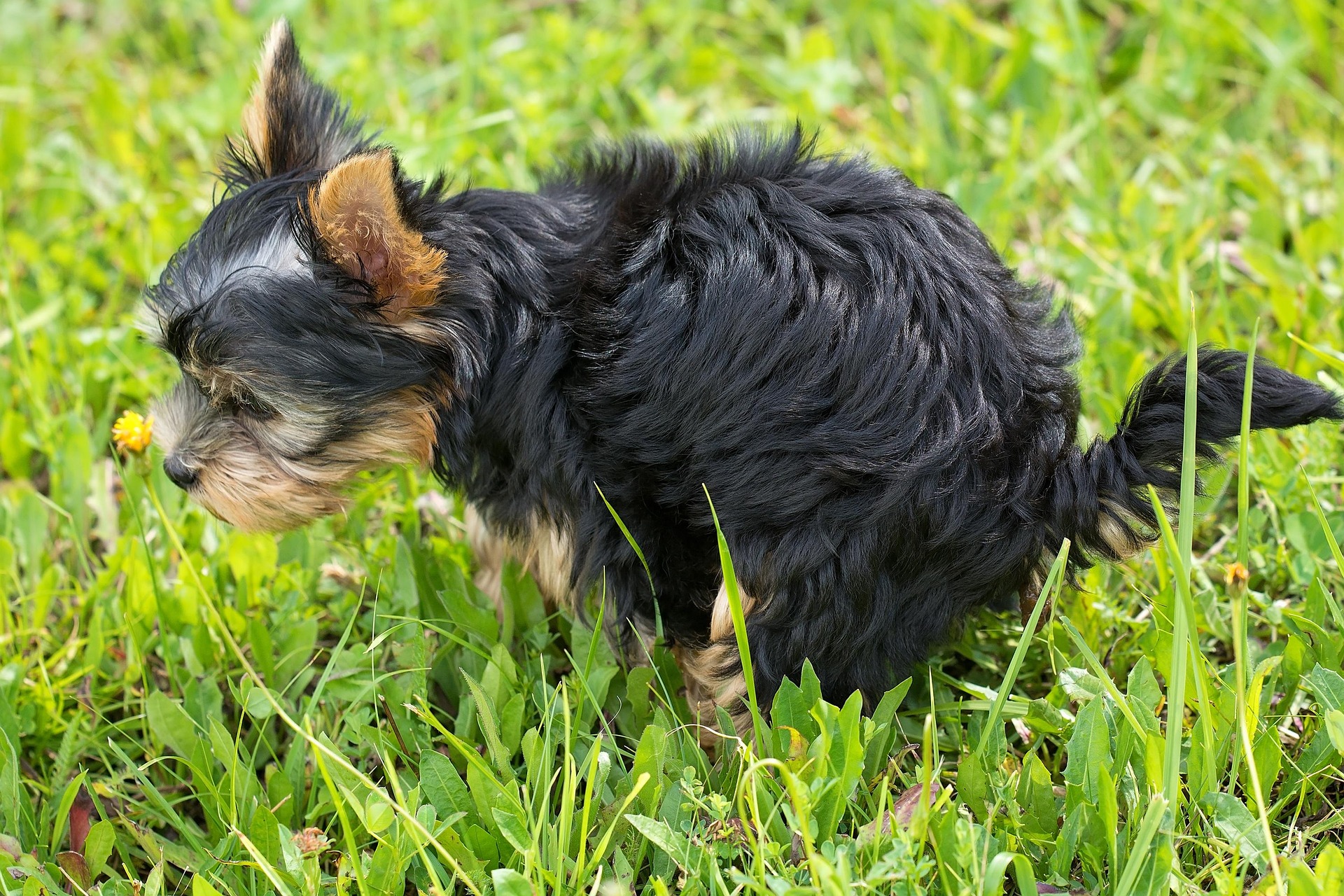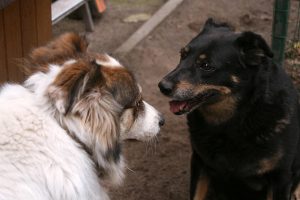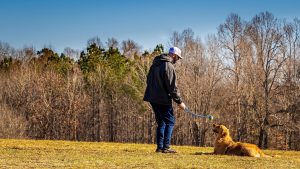My dog Milo kicked his back legs so hard after pooping last Tuesday that he sent a clump of dirt flying into my shin. I stood there watching my Jack Russell terrier execute what looked like a backwards moonwalk across the grass, his hind legs pistoning in rapid succession. The grass bore fresh scratch marks three feet long. A woman walking past laughed and said her Golden Retriever does the same thing.
This behavior puzzles dog owners everywhere. Your dog finishes his business, then immediately transforms into a tiny bulldozer, raking the ground with his back paws. Some dogs barely scrape. Others, like Milo, attack the earth like they’re trying to tunnel to China.
The scratching isn’t random. It serves specific biological and social functions that trace back to your dog’s wild ancestors. Understanding why dogs scratch after pooping reveals how they communicate, mark territory, and navigate their social world. So, if you want to know why does my dog scratch the ground after pooping, read on.
The scent gland explanation
Dogs have sweat glands between their paw pads that secrete pheromones. These glands, called merocrine and apocrine glands, produce a unique scent signature specific to each dog. When Milo scratches the ground after pooping, he’s depositing these pheromones onto the soil and grass.
The pheromones from paw glands differ from the scent compounds in feces and urine. Fecal matter contains volatile organic compounds that degrade relatively quickly. The pheromones from paw glands bind to soil particles and vegetation, creating a longer-lasting scent marker. This combination gives other dogs two information sources: the immediate scent of the feces and the persistent pheromone trail from the scratching.
Milo scratches more aggressively at the dog park than in our backyard. In familiar territory, he might do two or three half-hearted scrapes. In new locations or areas where many dogs visit, he scratches eight to ten times with force that tears up grass roots. The intensity appears to correlate with his perceived need to establish presence in that space.
The visual component works with the scent marking. Deep scratch marks in grass or dirt catch the attention of approaching dogs before they even smell the pheromones. The combination of visual disruption and chemical signals creates what researchers call a “multi-modal” communication system.
The ancestral behavior connection
Wolves, coyotes, and foxes all scratch the ground after defecating. Wildlife biologists have documented this behavior across wild canid species on every continent where they live. The behavior predates domestication by thousands of years.
Dr. L. David Mech, a wolf researcher who has studied wild wolf populations in Minnesota for over five decades, documented ground-scratching in his 1970 book “The Wolf: The Ecology and Behavior of an Endangered Species.” His observations showed that alpha wolves scratched more frequently and vigorously than subordinate pack members. The scratching served to mark territory boundaries and communicate pack presence to neighboring wolf packs.
Domestic dogs inherited this instinct. Some breeds retain stronger marking behaviors than others. Terriers, bred to hunt independently and mark den locations, often scratch more than companion breeds developed primarily for human interaction. Milo’s Jack Russell lineage makes him a prolific scratcher. I’ve watched him scratch after almost every outdoor bowel movement for six years.
Herding breeds like Border Collies and Australian Shepherds also scratch frequently, likely because their working ancestors needed to mark territory while moving livestock across vast ranges. Toy breeds, developed mainly for companionship rather than working roles, typically scratch less intensely or skip the behavior entirely.
The visual component
The scratch marks themselves communicate beyond scent. A patch of disturbed earth or torn grass catches the eye from twenty feet away. Dogs approaching the area investigate these visual cues before they even reach smelling distance.
During our walks, I know we are going to pass through spots where at least five different dogs in our neighborhood leave marks. Fresh scratch marks layer over old ones daily. Other dogs always stop to sniff that spot, even when no fresh feces remain visible.
Rain washes away fecal matter within days, and wind disperses much of the scent. The scratch marks, however, remain visible for weeks. In dry summer weather, the gouges in our local park’s grass persist for a month. This extended visual presence keeps the marking active long after the biological waste has degraded.
Different surfaces affect scratching behavior. Milo scratches vigorously on grass and dirt but barely scrapes on concrete or asphalt. The inability to create visible marks on hard surfaces may reduce the satisfaction or effectiveness of the behavior. Most dogs I’ve observed scratch more frequently when soft ground is available.
Dominance and confidence signals
Confident dogs scratch more than anxious ones. Milo is neutered, but he still scratches after most outdoor bowel movements. His scratching intensified between 18 months and two years old, the period when dogs typically reach social maturity. Before 18 months, his scratching was sporadic and weak. After two years, the behavior became consistent and forceful.
Age affects the behavior at both ends of life. Puppies under six months often scratch without much force, learning the motor pattern before executing it effectively. Senior dogs over ten years old tend to scratch less frequently, possibly due to arthritis, reduced territorial drive, or decreased energy levels.
The difference between casual marking and aggressive territorial display is obvious when you see it. Casual scratching involves a few backward kicks with moderate force. Aggressive scratching looks almost violent. The dog’s body tenses, his scratching becomes rapid and forceful, and he may growl or show stiff body language. I’ve seen Milo do this aggressive version exactly twice, both times when an unfamiliar dog approached while he was mid-scratch.
Gender differences
Male dogs scratch roughly twice as often as female dogs. Hormones drive much of this difference. Testosterone increases marking behaviors across species. Intact male dogs show the highest scratching rates, followed by neutered males, then intact females, with spayed females scratching least frequently.
Female dogs still perform the behavior, just less consistently. The three female dogs in my extended family scratch occasionally, maybe once every five or six bathroom trips. Milo scratches almost every single time we’re in public spaces and about 70% of the time in our yard.
The evolutionary logic makes sense. Males in most mammal species compete more intensely for breeding opportunities, making territory marking more critical to their reproductive success. Females select mates and raise offspring, roles that depend less on extensive territory advertisement.
When scratching becomes excessive
Normal scratching lasts five to fifteen seconds and happens after most outdoor bowel movements. The dog scratches a few times, maybe sniffs the area, then moves on. His paw pads show no damage. The behavior doesn’t interfere with walks or daily activities.
Excessive scratching looks different. The dog scratches for minutes at a time, returns repeatedly to the same spot to scratch more, or scratches until his paw pads bleed. This crosses from natural behavior into compulsive territory.
Anxiety can drive excessive scratching. Dogs experiencing separation anxiety, fear, or chronic stress sometimes develop compulsive marking behaviors. The scratching may serve as a displacement activity, something the anxious dog does to relieve internal tension.
Paw injuries from scratching happen most often on hard surfaces. A dog determined to scratch on concrete or asphalt can wear down his paw pads or tear his nails.
Medical issues sometimes hide behind scratching behavior. Allergies that cause paw itching might make a dog scratch more frequently. Neurological problems can create compulsive behaviors that look like normal marking but exceed typical patterns. Arthritis in the hips or back legs might cause unusual scratching movements as the dog tries to stretch or relieve discomfort.
I watch for three red flags with Milo: scratching that lasts longer than thirty seconds, scratching that draws blood from his paws, or scratching that prevents him from focusing on anything else. So far, his behavior has stayed well within normal bounds.
Other post-bathroom behaviors
Milo kicks backward after urinating too. The motion looks identical to his post-defecation scratching. This confirms that the behavior centers on scent marking rather than anything specific to bowel movements. Urine contains different chemical information than feces, but both trigger the instinct to add paw gland pheromones.
Some dogs run in tight circles before defecating. This pre-elimination ritual may help them assess the area for threats, align with magnetic fields (a debated theory), or simply settle their digestive system. Milo circles twice before pooping at the dog park and skips the circling entirely in our yard.
The “victory lap” phenomenon makes many dog owners laugh. The dog finishes eliminating, then suddenly sprints in wide loops with obvious joy. Animal behaviorists haven’t published much research on this specific behavior. The leading theory suggests relief from resolved physical discomfort (a full bowel or bladder) triggers a burst of playful energy.
Dogs sniffing their own waste seems strange to humans but serves a purpose. Fecal and urine chemistry changes with diet, health, and stress. A dog sniffing his own elimination products may be monitoring his physical condition through scent. I’ve noticed Milo sniffs his feces more carefully when his stomach has been upset.
These behaviors connect through the broader framework of canine scent communication. Dogs navigate social relationships, establish territory, and gather environmental information primarily through smell. Humans rely on visual and auditory information. This fundamental difference in sensory priorities explains many behaviors that seem odd to us but make perfect sense from a dog’s perspective.
Should you do anything about it?
I let Milo scratch whenever and wherever he wants, with two exceptions. I discourage scratching on other people’s manicured lawns because some neighbors care intensely about their grass. I also interrupt scratching if his paws are already irritated or injured.
Redirecting scratching requires offering an alternative. If your dog tears up your lawn and you want to preserve the grass, designate a specific area where scratching is allowed. Use positive reinforcement to encourage your dog to eliminate in that zone. This approach satisfies the dog’s instinct while protecting your landscaping.
Teaching an alternative marking behavior works for dogs whose scratching causes problems. Some trainers teach dogs to kick gently or to scratch in a specific direction that causes less damage. This requires patience and consistent reward-based training over several weeks.
Intervention becomes necessary when scratching causes injury, creates aggressive displays toward other dogs, or develops into a compulsive behavior. These situations warrant consultation with a veterinary behaviorist who can assess whether the scratching stems from normal instinct or an underlying behavioral or medical problem.
Most situations don’t require interference. Dogs have scratched the ground after eliminating for thousands of years. The behavior bothers humans more than it bothers other dogs. My approach with Milo focuses on managing context rather than suppressing instinct. If we’re somewhere that scratching causes problems, I guide him to a better location before he eliminates. Once he’s in an appropriate spot, I let nature take its course.
The instinct runs deep. Attempting to completely eliminate scratching through punishment or correction usually fails and may create anxiety around elimination. Dogs who get punished for natural behaviors sometimes develop elimination problems, refusing to go in front of their owners or holding their bowel movements to unhealthy lengths.

